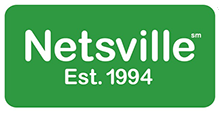Earlier this year, we explored the 10 Steps to Becoming a Successful Blogger, 5 Ways to Keep People on Your Blog, and the Top 10 Ways to Screw Up Your Blog [INFOGRAPHIC], but which platforms are truly the most ideal to begin building a basis for blogging success? There are many websites to choose from, each with their unique pros and cons and individual cost factors. On the world wide web, content is king and blogging is one of the best ways to maximize your readership and potential branding opportunities – a challenge that can easily be derailed if the wrong platform is chosen. With that in mind, we’ll be taking a look at our picks for the Top 5 Blogging Platforms available.
1. WordPress
Website: wordpress.com
Established in: 2003
WordPress is unequivocally the best blogging option available for both businesses and individual bloggers. It is the most customizable platform with a wide variety of themes and plugins available to put a personalized stamp on your site. With that being said, many of the most impressive themes/plugins do have a cost factor and the set-up can be quite overwhelming for many unfamiliar with website setup.
A free, basic version is available to get started with the option to buy your own domain and upgrade to a site that is truly your own marking WordPress as not only the best free blogging option out there but also the best foundation for future success.
Pros: complete customization; incredible amount of themes, widgets, and plugins available (with many free options to choose from); most stable interface and platform
Cons: very complicated for a first-time blogger or those unaccustomed to basic website building; cost of buying your own domain
Best applications: businesses; individual bloggers; authors
2. Tumblr
Website: tumblr.com
Established in: 2007
If your content is primarily media driven, such as video, image, or music posts, and you want to gain an active social following, Tumblr may be the best option. Free to use and easy to share, Tumblr is ideal for those not focusing on lengthy articles and appeals to the shorter attention spans of the younger generation; nevertheless, it lacks the maturity of a WordPress blog and can attract an audience that your content may not be intended for.
Pros: one of the best platforms for showcasing media and gain a strong following
Cons: not suited for long articles or posts; primarily populated by younger users (from teenagers to college-aged individuals)
Best applications: younger demographic; image-centric blogs; microbloggers
3. Blogger (Blogspot)
Website: blogger.com
Established in: 1999
One of the oldest and most prolific blogging platforms available, Blogger is completely free and simple to use. Although not nearly as customizable as a WordPress site, Blogger offers a good selection of themes and designs that can be adapted and flexed to help distinguish your blog. A basic knowledge of html or CSS can further help individuate your blog if needed but it is not necessary for those who want to keep it more straightforward.
Bought by Google in 2003, Blogger is fully compatible with Google + with integrated Google Analytics and the advantage of better SEO (search engine optimization). On the downside, Blogger does not allow you to host your own site or own your domain which means that you technically do not own your blog (plus, there’s always the slight risk that Google decides to abandon the project with little to no warning); nevertheless, Blogger offers a large community to interact with making it one of the best options for the start-up blogger.
Pros: very easy to use; connects easily to YouTube and Google + accounts; large community; good SEO
Cons: plugin, widget, and theme limitations; completely owned by Google
Best applications: start-up bloggers; individual bloggers; Google + users
4. Squarespace
Website: squarespace.com
Established in: 2004
With the exception of WordPress, Squarespace is the most ideal blogging interface for businesses, artists, and professional bloggers. It’s ease of use and crackerjack themes deliver some of the best looking blogs (and even websites) online; however, if cost is an issue, Squarespace does not offer a free version. Rather, there is an $8 monthly fee for individual plans and a $24 per month fee for business plans. As a plus, the plans are packaged with free domain names and 24/7 support.
Pros: professional-looking and ease-of-use
Cons: Cost ranges from $96 to $312 per year – no free option
Best applications: businesses; professional bloggers; artists
5. Medium
Website: medium.com
Established in: 2012
Created by one the original Twitter cofounders, Medium is one of the newest blogging platforms online with an emphasis on written posts and articles. Unlike Tumblr which is more attune with media and short-form works, Medium is the perfect showcase for the long-form written word and is, ironically, the virtual opposite of Twitter (most famous for its 140 character limit). It can integrate easily with your Twitter handle and the editing interface is one of the best available.
On the other hand, if customization is an important factor for you, Medium may not be the most suitable option. Its style is blanketed, with very limited options outside of its content editing. Moreover, the site is completed hosted by Medium with no other option available and custom domains are currently only available on an invite-only basis.
Pros: very easy to use; perfect for long-form content
Cons: very little customization available; custom domains a hassle
Best applications: Twitter users; individual bloggers
Based in Rochester, New York, Netsville is an Internet Property Management company specializing in managing the Digital Marketing, Technical, and Business Solutions for our customers since 1994. For more information, please click here.











